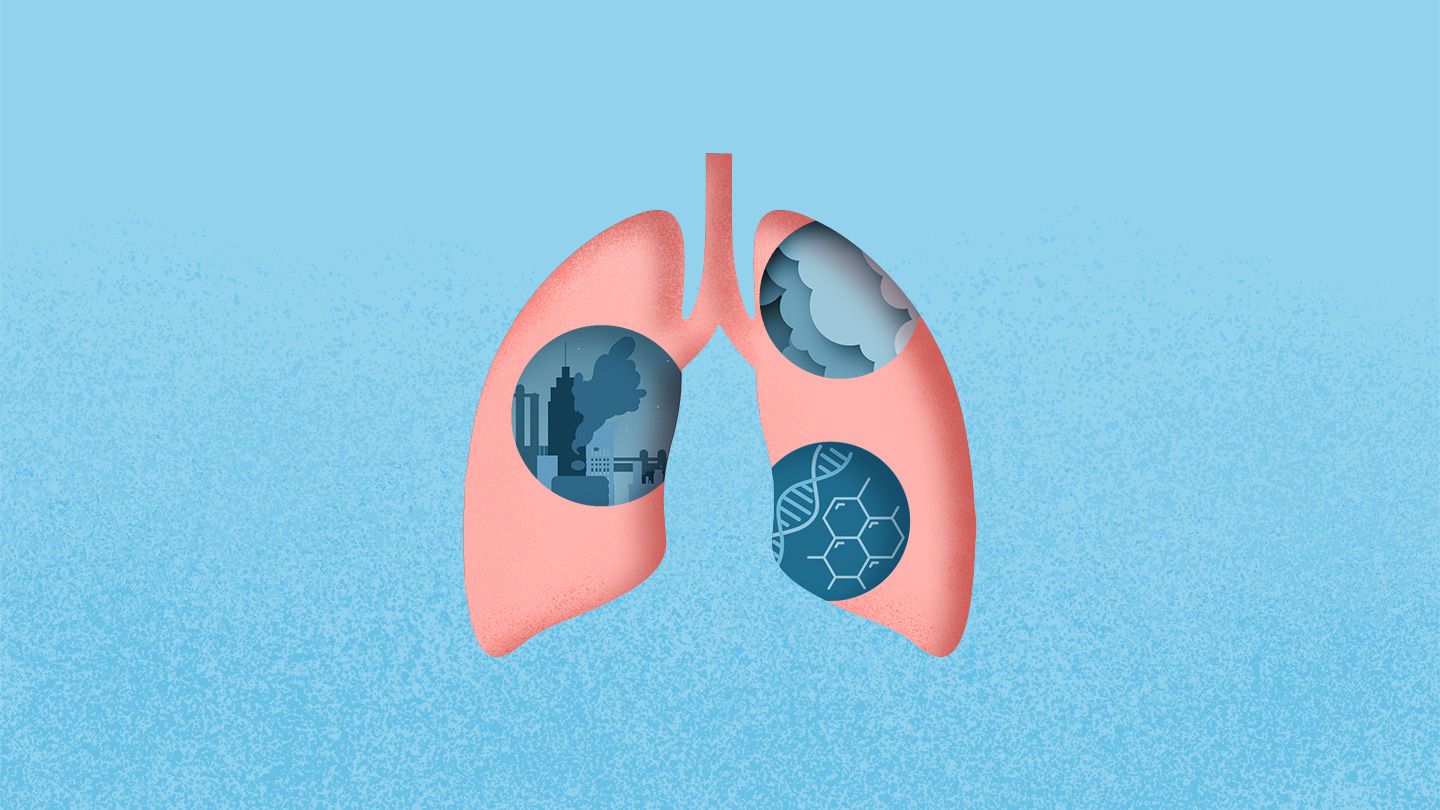The explanation is complex, likely due to many factors, and is not fully understood, says Andrew Kaufman, MD, a thoracic surgeon at Mount Sinai Hospital in New York City. “We know very little about why this is occurring and why it seems to be occurring at higher rates now compared with historical time points,” he says.
Research points to some possible explanations. “Increased secondhand smoke, radon exposure, air pollution, a family history of lung cancer, and asbestos influence this trend, accounting for nearly 6,500 of the 20,000 to 40,000 yearly cases of lung cancer among never-smokers in the United States,” says Dr. Ahluwalia.
Here are some possible reasons for the increase in lung cancer cases among never-smokers.
An Increase in Never-Smokers
“The number of people who never smoked as a proportion of the general population is higher now than ever in the last 100 years because the rates of smoking have declined to about 20 percent of the adult population,” says Dr. Kaufman. “So, with fewer people having a history of smoking, there is a higher chance of diagnosing lung cancer that is not attributable to smoking.”
Genetic Mutations
People who have never smoked but get lung cancer often have genetic mutations in their cancer cells that contribute to cancer development. “Many never-smoking lung cancers harbor genetic mutations known as ‘driver mutations’ that cause otherwise healthy lung cells to become cancerous,” says Kaufman. “But we don’t know what causes these mutations to occur.”
Common mutations in never-smokers who develop lung cancer include changes in the EGFR, ALK, and ROS1 genes, among others. For example, Asian populations tend to have a greater frequency of EGFR mutations and ALK rearrangements, which may account for their higher rates of lung cancer in never-smokers, explains Ahluwalia.
Fortunately, there are drugs and therapies available to target many of these mutations, which can be used alone or in combination with chemotherapy. Examples include osimertinib, lazertinib, crizotinib, and many more, says Ahluwalia, who also stresses the importance of personalized medicine for lung cancer care. “These therapies have significantly improved survival and quality of life for never-smokers [with lung cancer],” he adds.
Family History
More Screening
Doctors may be detecting more lung cancers in people who have never smoked because of the increased use of screening technologies. “We image people for so many things unrelated to lung cancer that we end up finding things incidentally,” says Kaufman. “Someone’s kidney stones may save their life if a spot on the lung is noticed and the appropriate diagnosis and care is followed through.”
“Never-smokers with a family history or consistent exposure to occupational or environmental risks should [decide together] with their provider to assess the need for screening,” says Ahluwalia.
Secondhand and Thirdhand Smoke
“Recent studies have reported that secondhand smoke exposure alone increases one’s risk of lung cancer by over 20 percent, even if they never partake,” says Ahluwalia.
Radon Exposure
Other Environmental Pollutants
- Air pollution
- Diesel exhaust
- Asbestos
- Arsenic
- Arsenic compounds, such as pesticides and herbicides
- X-ray and radiation technology
- Inhaled chemicals such as cadmium, chromium, and coal
Read the full article here




